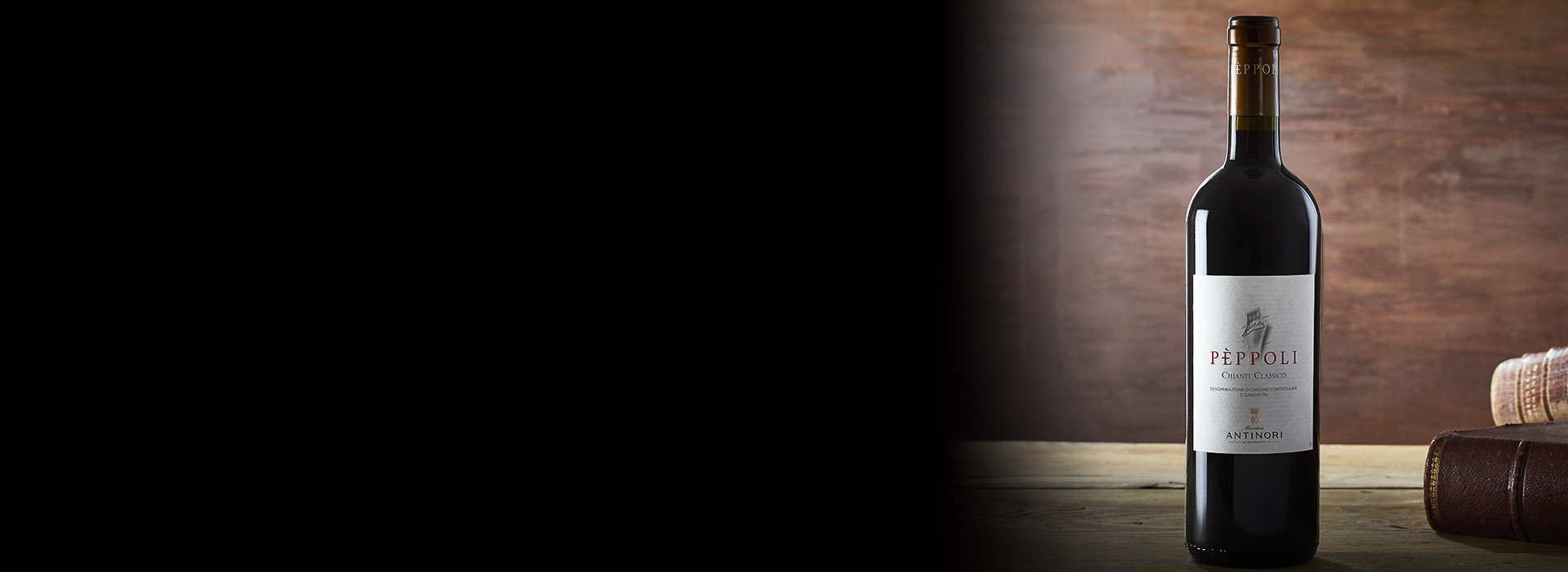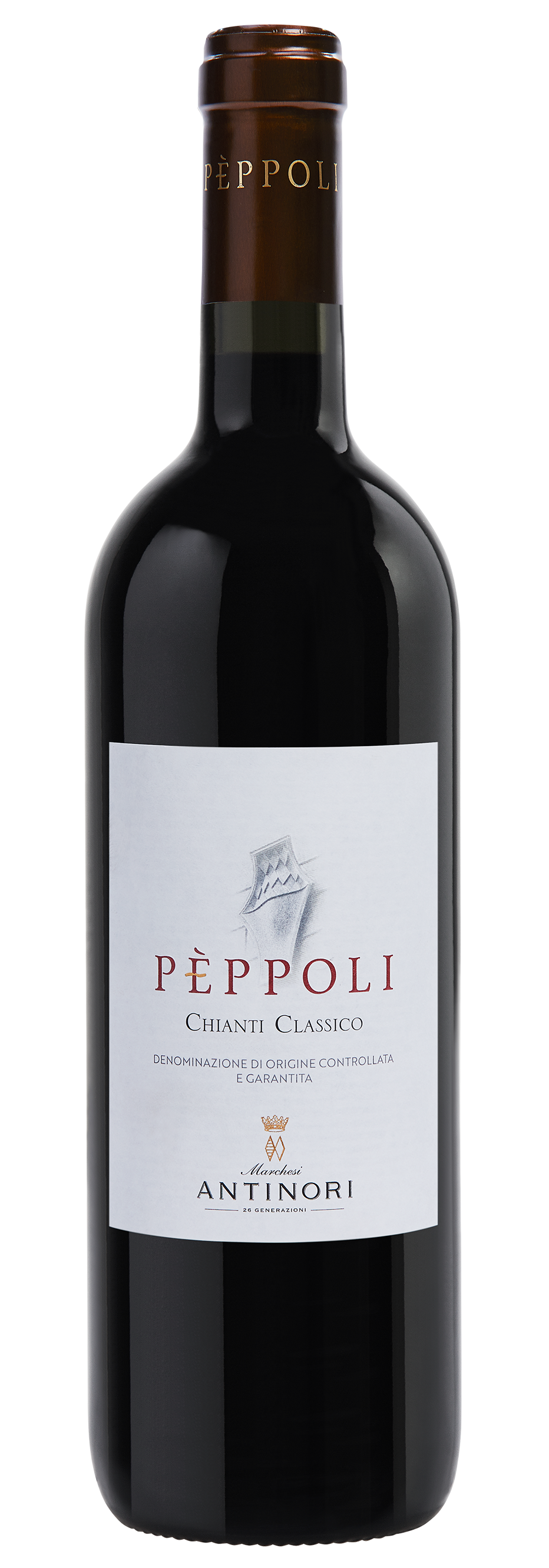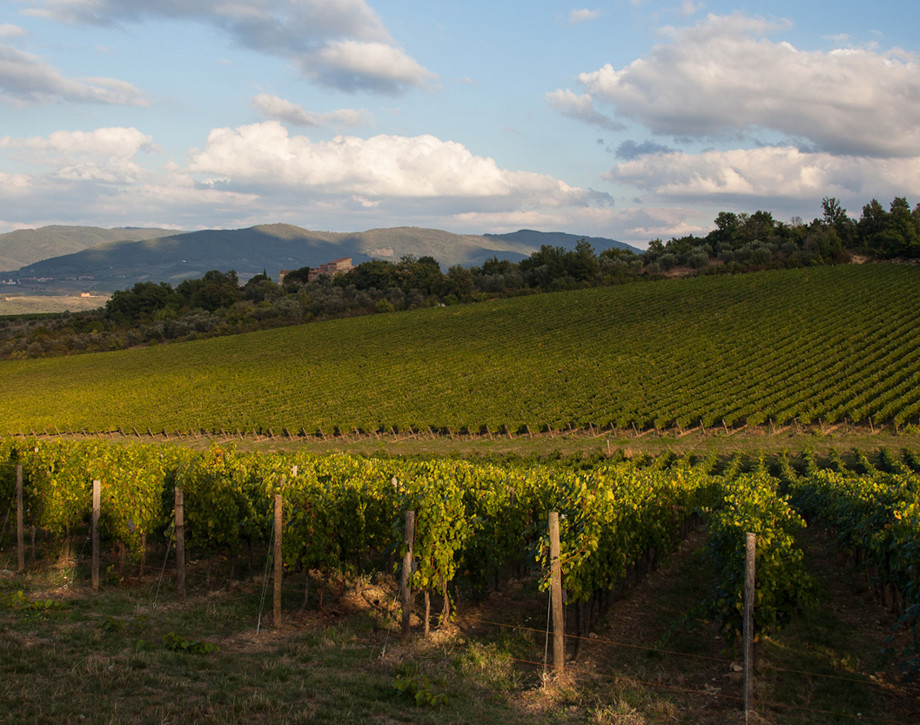Pèppoli

Climate
After a mild autumn and winter with little rainfall, the spring season in Chianti Classico began with fine weather, warm and sunny days which led to a bud break which was approximately ten days earlier than historical seasonal averages. These climatic conditions remained unchanged during the entire month of April, but changed during the month of May with precipitation and cooler temperatures which, nonetheless, did not influence the important phases of flowering and bud set which followed. The summer, on the whole warm, dry, and without peak temperatures, assisted in maintaining an excellent balance between the growth of the vegetation and the gradual ripening of the grapes. The harvest months were regular in their weather with occasional rainfall which alternated with lengthy periods of sunshine and an excellent breeziness, favoring an optimal final ripening of all the different grape varieties cultivated in Chianti Classico.
Vinification
The grapes, picked separately, variety by variety, were destemmed and pressed and the must transferred into stainless steel fermenting tanks. The fermentation took place at temperatures maintained between 79° and 82° Fahrenheit (26-28° centigrade) to fully bring out the aromatic patrimony of the crop and conserve the fruity and floral notes of the different varieties; the period of skin contact lasted 8-10 days for the Sangiovese and fifteen days for the complementary varieties, and the extraction was carried out with delicate techniques aimed at producing soft and polished tannins. At the end of the malolactic fermentation, which terminated by the end of the year for all of the different varieties, the wine went into wood, where it aged for approximately nine months in large Slavonian oak casks and, for a small part of the total production, in stainless steel tanks. The bottling took place in December of 2017.
Historical Data
The Pèppoli vineyards produce a Chianti Classico that is a blend made from Sangiovese grapes and complementary varieties; Pèppoli is recognized and appreciated for the full expression of its fruit. A wine that represents the Chianti Classico territory and its historic grape variety with typical floral and fruity aromas. Pèppoli was first produced in 1985 and since 2013 part of the harvest undergoes vinification at the Antinori nel Chianti Classico cellars.
Tasting Notes
The 2016 Pèppoli is ruby red in color. Intensely fruity notes of cherries and red currants dominate on the nose along with integrated hints of violets and a light touch of toasted oak. The palate, fresh and savory with supple tannins, shows a finish and aftertaste which recall the sensations first felt on the nose.
Awards
James Suckling 91/100 USA Falstaff 90/100 GER Daniele Cernilli 92/100 IT

The Wine
The Pèppoli vineyards produce a Chianti Classico that is a blend made from Sangiovese grapes and complementary varieties; Peppoli is recognized and appreciated for the full expression of its fruit. A wine that represents the Chianti Classico territory and its historic grape variety with typical floral and fruity aromas.

Climate
After a mild autumn and winter with little rainfall, the spring season in Chianti Classico began with fine weather, warm and sunny days which led to a bud break which was approximately ten days earlier than historical seasonal averages. These climatic conditions remained unchanged during the entire month of April, but changed during the month of May with precipitation and cooler temperatures which, nonetheless, did not influence the important phases of flowering and bud set which followed. The summer, on the whole warm, dry, and without peak temperatures, assisted in maintaining an excellent balance between the growth of the vegetation and the gradual ripening of the grapes. The harvest months were regular in their weather with occasional rainfall which alternated with lengthy periods of sunshine and an excellent breeziness, favoring an optimal final ripening of all the different grape varieties cultivated in Chianti Classico.
Vinification
The grapes, picked separately, variety by variety, were destemmed and pressed and the must transferred into stainless steel fermenting tanks. The fermentation took place at temperatures maintained between 79° and 82° Fahrenheit (26-28° centigrade) to fully bring out the aromatic patrimony of the crop and conserve the fruity and floral notes of the different varieties; the period of skin contact lasted 8-10 days for the Sangiovese and fifteen days for the complementary varieties, and the extraction was carried out with delicate techniques aimed at producing soft and polished tannins. At the end of the malolactic fermentation, which terminated by the end of the year for all of the different varieties, the wine went into wood, where it aged for approximately nine months in large Slavonian oak casks and, for a small part of the total production, in stainless steel tanks. The bottling took place in December of 2017.
Historical Data
The Pèppoli vineyards produce a Chianti Classico that is a blend made from Sangiovese grapes and complementary varieties; Pèppoli is recognized and appreciated for the full expression of its fruit. A wine that represents the Chianti Classico territory and its historic grape variety with typical floral and fruity aromas. Pèppoli was first produced in 1985 and since 2013 part of the harvest undergoes vinification at the Antinori nel Chianti Classico cellars.
Tasting Notes
The 2016 Pèppoli is ruby red in color. Intensely fruity notes of cherries and red currants dominate on the nose along with integrated hints of violets and a light touch of toasted oak. The palate, fresh and savory with supple tannins, shows a finish and aftertaste which recall the sensations first felt on the nose.
Awards
James Suckling 91/100 USA Falstaff 90/100 GER Daniele Cernilli 92/100 IT

Tenuta Pèppoli
The Pèppoli estate is located 5 kilometers north east of the Tenuta Tignanello estate with a total area of 100 hectares (247 acres) of which 50 hectares (123 acres) are planted with vineyards and is home to Peppoli Chianti Classico DOCG. The Peppoli estate has a long standing tradition for producing Peppoli Extra Virgin Olive Oil and Peppoli Red Wine Vinegar made by transforming Peppoli wine into vinegar using traditional methods.


















